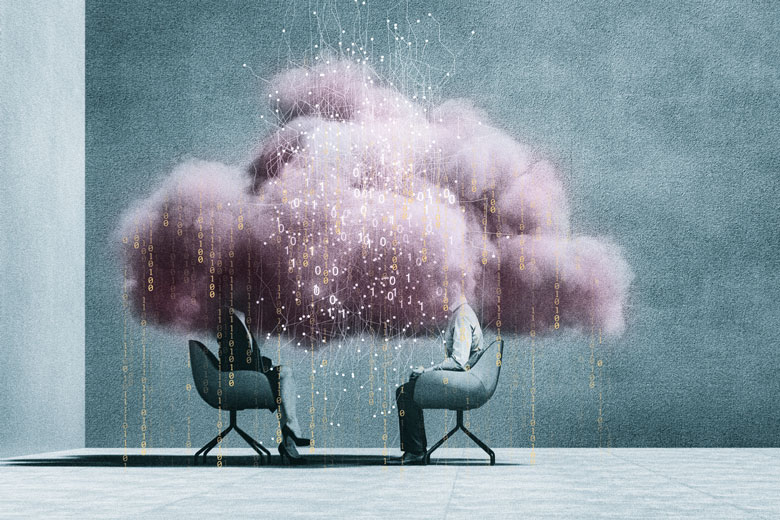
Introduction:
Art has always been a testament to human creativity and expression, but with the advent of artificial intelligence (AI), a new era is dawning upon the art world. The convergence of technology and creativity has given birth to a fascinating realm where AI and human artists collaborate, pushing the boundaries of artistic innovation. In this article, we delve into the rise of AI in the art world, exploring the remarkable intersection of technology and creativity.
Best AI Art Generators: Unleashing Creativity with Algorithms:
One of the most intriguing aspects of AI’s involvement in art is its ability to generate unique and captivating artworks through AI art generators. These sophisticated algorithms have gained significant attention and acclaim in recent years. Powered by machine learning and deep neural networks, these AI art generators possess the capability to analyze vast amounts of artistic data, learn from it, and then generate new artistic pieces in various styles and genres.
Among the best AI art generators available today, several notable platforms have garnered attention. DeepArt, ArtBreeder, and RunwayML have made significant strides in enabling artists, designers, and enthusiasts to explore the creative potential of AI. With just a few clicks, users can witness AI algorithms transforming their ideas into visually stunning compositions.
The Power of AI Art Generators: Blending AI and Human Vision:
The allure of AI art generators lies in their ability to blend the technical prowess of AI with the unique perspectives and visions of human artists. AI algorithms can be trained on vast collections of artwork, absorbing the essence of different artistic styles and techniques. When combined with the input and guidance of human artists, these generators can produce awe-inspiring creations that push the boundaries of traditional artistic conventions.
The collaborative approach between AI and human artists sparks new possibilities and challenges conventional notions of creativity. Artists can leverage AI algorithms to explore uncharted territories, experiment with novel styles, and even discover new artistic expressions they may not have conceived otherwise. The synergy between AI and human vision gives birth to a fascinating fusion of artistic excellence and technological innovation.
Controversies and Criticisms: Debating Authenticity and Originality:
However, the integration of AI in the art world is not without its controversies. Critics argue that AI-generated art lacks the emotional depth and originality that human-created art embodies. They question the authenticity and the role of AI in the creative process. On the other hand, proponents of AI-generated art see it as a tool that augments human creativity, offering new avenues for artistic exploration and experimentation.
The debate around the authenticity and originality of AI-generated art is an important one. While AI algorithms can analyze and replicate existing artistic styles, they are still products of human programming and training. The human artists who provide input and guidance throughout the creative process play a significant role in shaping the final output. Therefore, it can be argued that AI-generated art is a collaboration between human and machine, rather than a replacement for human creativity.
Beyond AI Art Generators: AI’s Influence in Other Artistic Disciplines:
Beyond AI art generators, AI is also making significant contributions to other artistic disciplines. For example, AI algorithms are being employed in music composition, film editing, and fashion design, among others. The creative potential of AI seems boundless, with artists and technologists collaborating to unlock new forms of expression and aesthetic experiences.
In music composition, AI algorithms can analyze vast musical databases and create melodies and harmonies that are both innovative and emotive. In film editing, AI can streamline the editing process, analyze footage, and even generate visual effects, enhancing storytelling capabilities. In fashion design, AI algorithms can assist in creating unique designs, predicting trends, and personalizing customer experiences. The integration of AI in these artistic disciplines augments human creativity, providing artists with powerful tools to push the boundaries of their craft.
Embracing AI with Ethical Considerations:
As AI continues to evolve, it is crucial for the art world to embrace this technological advancement while also considering the ethical implications that arise. Questions regarding authorship, ownership, and the relationship between human and machine creativity need to be addressed. Striking the right balance between AI and human involvement in the creative process will shape the future of the art world.
Ownership and authorship are particularly pertinent in the context of AI-generated art. Who owns the rights to an AI-generated artwork? Is it the human artist, the AI art generator developer, or the AI algorithm itself? These questions pose legal and ethical challenges that require thoughtful consideration. Additionally, understanding the distinction between human creativity and AI assistance is crucial to ensuring the preservation of artistic integrity and individual expression.
The Future of AI in the Art World: A New Era of Creativity:
In conclusion, the rise of AI in the art world represents an exciting and transformative period. AI art generators have emerged as powerful tools, enabling artists to explore uncharted territories and expand the realm of creativity. While debates around the authenticity of AI-generated art persist, there is no denying that AI has become an integral part of the artistic landscape. The intersection of technology and creativity opens up a world of possibilities, challenging our perceptions and redefining the boundaries of artistic expression.
As AI continues to advance, it is essential for artists, technologists, and society as a whole to navigate the ethical considerations and embrace AI as a tool that augments human creativity. With responsible use and thoughtful collaboration, AI has the potential to unlock new realms of artistic excellence, fostering innovation, and pushing the boundaries of human imagination. The future of AI in the art world holds the promise of a new era of creativity, where human and machine work in harmony to create artistic masterpieces that captivate and inspire.
Tech World Times (TWT), a global collective focusing on the latest tech news and trends in blockchain, Fintech, Development & Testing, AI and Startups. If you are looking for the guest post then contact at techworldtimes@gmail.com

